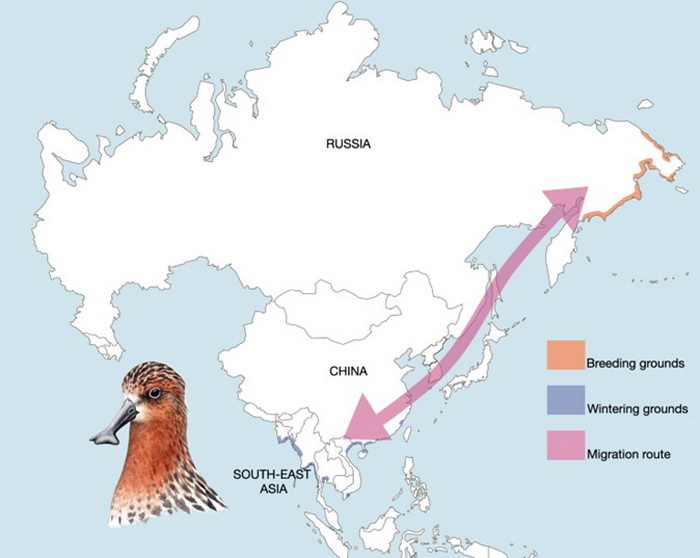Background
The East Asian-Australasian Flyway (EAAF) is the most endangered bird migration route in the world, covering 22 countries and regions and involving over 280 species of migratory waterfowl. The Spoon-billed Sandpiper is the flagship species of the EAAF, with its breeding grounds located in Russia's Far East, and its wintering grounds spanning southern China and Southeast Asia. During migration, the species passes through Japan, the Korean Peninsula, and China's coastal areas. The population of the Spoon-billed Sandpiper has sharply declined, necessitating urgent conservation action. The Saving the Spoon-billed Sandpiper project is a key initiative in line with Xi Jinping's ecological civilization philosophy and is central to global biodiversity conservation. The project's implementation will contribute to national ecological security, protect migratory birds and biodiversity, enhance global environmental governance, and support the creation of a Beautiful China.

Project Mission
The project focuses on the Spoon-billed Sandpiper as a flagship species, aiming to connect the distribution areas of domestic migratory waterfowl into a network of socially engaged conservation efforts. It supports the effective protection of the Spoon-billed Sandpiper's breeding and wintering habitats abroad and promotes international collaborative conservation mechanisms and actions.
Key Focus Area 1: Habitat Protection and Restoration
The project works to establish a comprehensive conservation network covering key habitats along the Spoon-billed Sandpiper’s migration route. Through scientific research and monitoring, the population status of the species will be assessed, and threats to its habitats will be identified and addressed. Ecological restoration efforts will include wetland recovery, vegetation rehabilitation, and the management of invasive species to improve and protect the Spoon-billed Sandpiper’s habitats. The goal is to ensure effective management and protection of all key habitats for the species while supporting the conservation of its breeding and wintering sites abroad, creating a synergistic protection effect across the entire range.
Key Focus Area 2: Scientific Research and Policy Advocacy
The project promotes multi-dimensional scientific research, covering areas such as population surveys, morphology, physiology, behavior, and genetics, to gain a deeper understanding of the Spoon-billed Sandpiper’s ecological needs and threats. Based on these research findings, the project will collaborate with policymakers to propose and implement effective conservation policies and measures. Additionally, the project aims to strengthen coordination among different conservation mechanisms and, through capacity-building, improve the quality and effectiveness of management practices to facilitate comprehensive protection for migratory waterfowl and their habitats.
Key Focus Area 3: Community Participation and Co-Construction
The project actively encourages community participation and co-construction to raise local awareness of the importance of wetland conservation and to inspire involvement in protection actions. Through education and training, the project supports local communities in benefiting from conservation through eco-tourism, sustainable fisheries, and agriculture, achieving a win-win for both conservation and development. Collaboration with governments, businesses, and NGOs ensures that the livelihoods of communities near protected areas are well-guided and supported, helping to build a future of harmonious coexistence between people and nature.